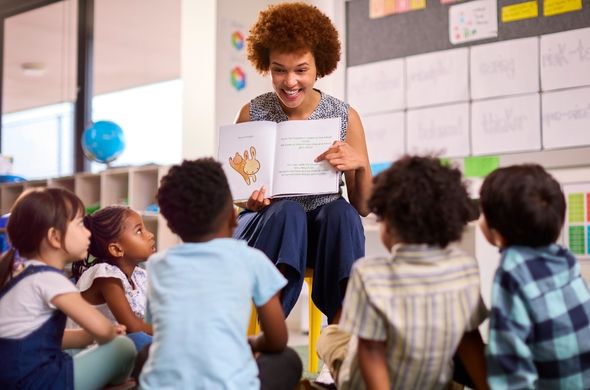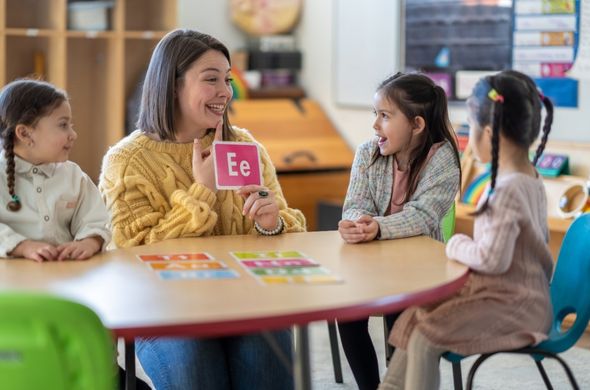
How to Bring the Science of Reading to Life in Your Classroom
If you’ve been in any kind of education circle, you’ve probably heard of the Science of Reading. It’s definitely a hot topic, but it can also cause some confusion. The Science of Reading isn’t a specific curriculum or one-size-fits-all package. It’s actually a large, growing body of research involving thousands of studies across decades and disciplines about how children learn to read.
Dr. Louisa Moats puts it beautifully:
“The science of reading is not an ideology, a philosophy, a political agenda, a one-size-fits-all approach, a program of instruction, or a specific component of instruction. It is the emerging consensus from many related disciplines, based on literally thousands of studies, supported by hundreds of millions of research dollars, conducted across the world in many languages.”
These studies have shown us what works, what doesn’t, and how we can set up every child for reading success. So, how do we take this powerful research and bring it to life in our early childhood classrooms?
Here are five engaging, research-backed practices that align with the Science of Reading and are perfect for pre-K through 2nd grade.
1. Interactive Read-Alouds
Choose rich, engaging books that match your weekly themes. Tie in your social studies and science topics, too.
This builds comprehension, vocabulary, and a genuine love for reading and further research.
Try This: Pause while reading to explain background knowledge, ask questions, discuss vocabulary, make connections, and spark conversation.

2. Phonemic Awareness Play
Phonemic Awareness — the ability to hear and manipulate sounds — is the number one predictor of future reading success.
Try This: Try segmenting and blending sounds, playing rhyming games, or asking, “What word do these sounds make? /s/ /i/ /t/?“
It can be so much fun! Just 5–6 minutes a day makes a big difference! Watch this for an example of a playful way to implement Phonemic Awareness play.
Read about more Phonological and Phonemic Awareness-building activities here.
3. Explicit Phonics Instruction
- Provide students with a word sort puzzle, including cutouts of several Consonant-Vowel-Consonant (CVC) words, like: “hat, hen, pig, log, cup.”
- Color code puzzle headers by vowel (red for A, blue for E, for example).
- Have students read and place each word under the correct vowel.
I love to do word puzzles as whole-group instruction. They are great for encouraging oral blending and segmentation, and reinforcing phoneme-grapheme mapping.
Word Building Race with Magnetic Letters:
- Present students with a word family, like: “-at” or “-op.”
- Using magnetic letters, have students build as many real words as they can in two minutes (cat, bat, sat, mop, hop, pop, for example).
Tip: Use cookie sheets or magnetic whiteboards for easy clean-up!
Word Ladders:
- Start with one word, like: “cat.”
- Change one sound or letter at a time to make a new word.
Our starting word, “cat,” could become “hat,” which could become “hot,” then “hop,” and, finally, “mop.”
Real vs. Nonsense Sort:
- Create cards with CVC words. Some words should be real words, and some should be nonsense words.
- Pick up one card at a time and read the word aloud together.
- “Build” the word by tapping along your arm as you sound out one sound at a time.
- Sort the word into “real” or “nonsense” columns. This is great for decoding, fluency, and playful engagement.
Tip: When teaching phonics, follow a clear scope and sequence. Use “I Do, We Do, You Do” to model and practice.

4. High-Frequency Words and Heart Words
Some high-frequency words can be decoded with phonics. Others, like “said” or “come,” must be learned “by heart.”
Try This: Use orthographic mapping: a strategy that connects sounds to spelling patterns for long-term retention.
Also try this fun game to learn heart words!
Heart Word Hop Game:
- Cut colored paper into hearts.
- Write one heart word onto each paper, and tape them to the ground.
- Call out a word or sound, like: “Find the word with a tricky /e/ sound!”
- Students hop to the correct word.
- Students read the word aloud and identify the tricky part of the word.

5. Writing Integration
Reading and writing go hand-in-hand. Writing reinforces phonics, vocabulary, and comprehension.
Try This: Try these fun writing activities!
Write the Room
- Tape 10–12 word cards focused on target phonics skills or themes around the room.
- Give students clipboards and a recording sheet. Your recording sheet should have a table with categories that correspond to your word cards (for example: “Short ‘a’ words,” or “weather words”) and room for students to write.
- Students walk around the room, read each word, and write it next to its corresponding category on the recording sheet.
Tip: Use magnifying glasses, flashlights, or binoculars to help students search for the words and make it even more fun!
Weekly Themed Writing Prompts
With weekly writing activities, you can reinforce reading topics or science and social studies themes while building vocabulary and comprehension.
- Choose a theme, like, “Community Helpers,” “Weather,” or “Animals.”
- Introduce the theme with a read-aloud and discussion.
- Provide 2–3 simple, themed writing prompts.
For example:
“If I were a firefighter, I would…”
“My favorite kind of weather is…”
“Bears live in the…. They like to eat…”
- Students write and illustrate their responses.
Tip: You can compile everyone’s writing into a class book!
These are just a handful of the many fun, hands-on activities that promote phonics, phonemic awareness, and word recognition — without kids even realizing how much they’re learning.
You are doing important work. Teaching kids to read is one of the most powerful gifts we can give them — one that lasts a lifetime.
Let’s keep learning, growing, and giving our students the best foundation possible.
You’ve got this. 💛
Warmly,
Debbie